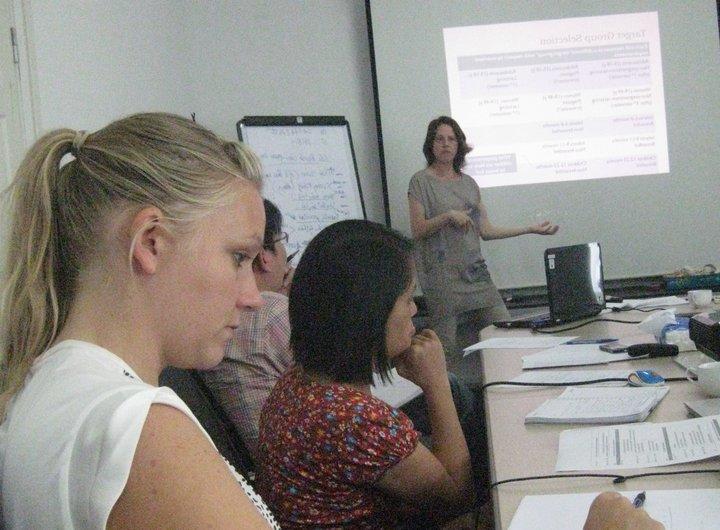From the Field Bringing together best methods to assess food intake and diet quality in Vietnam

Jessica Raneri, Nutrition and Marketing Diversity Programme Specialist, Bioversity International, sends her second report from Vietnam where she is carrying out research with partners to improve diet quality and diversity using local foods.
Jessica Raneri, Nutrition and Marketing Diversity Programme Specialist, Bioversity International, sends her second report from Vietnam where she is carrying out research with partners to improve diet quality and diversity using local foods.
Recently I facilitated a three-day workshop in Hanoi organized by Bioversity International. The workshop enabled nutrition practitioners, from eight different organizations, to share experiences of using the 24-hour recall method. 24-hour recall surveys are a way of capturing information about what a person has eaten or drunk in the previous 24 hours. It requires specialist skills to reach a common understanding between the researcher and the respondent of what was consumed, how much was consumed and how it was prepared. This kind of information sharing among local non-governmental organizations, research groups and ministries is essential if the work is to be relevant and affect the lives of the community where we work.
We looked together at the different tools and methods that can be used to most accurately capture the quantities and content of foods consumed. It also gave us an opportunity to review best practices from around the world, examine the current methods used in Vietnam, and to discuss context-specific characteristics of Vietnamese food culture. This was key as we look to refine the 24-hour methodology being piloted this year under the CGIAR Research Program on Humidtropics, and adapt it to suit our own research needs.
For example, participants discussed some of the challenges that make it difficult to be precise about what foods are eaten and how much. For example, food is often consumed in a communal manner in Vietnam, rather than served as individual portions, with people picking and choosing what pieces/parts they want from the common pot. This means, that if a stir fry is served to the family table with 50% meat and 50% vegetables, you cannot just assume that if one bowl of the stir fry is consumed, that the person ate half a bowl of meat and half a bowl of vegetables.
In order to address these kind of challenges that may be encountered on the field to accurately recall the quantity of individual foods and recipes consumed, we discussed the use of various tools such as the Vietnamese National Nutrition Institute's 'Food Atlas' which visually documents different chopstick quantities to help understand quantities consumed.
Where it is not practical to use scales, we also agreed to use measuring cylinders to quantify the amounts consumed. Measuring cylinders are a way to measure volumes of liquid, which can then be converted using density conversion factors to give information on the weight of food consumed. For example, by asking an individual to mark on their own bowls how much rice they eat, you can then fill the bowl with water to that level, and then tip the water into the measuring cylinder to measure the volume.
The methodology we refined at the workshop will be used together with a household survey and focus groups to explore locally available agriculture biodiversity and nutrition knowledge, attitudes and practices. A first round of data collection will be conducted in the field in the Mai Son district of Son La Province this August and September, and repeated in November to capture seasonal variation in the diet, before the results are analyzed and shared back in the rural communities where we are working to identify best-bet interventions together to bridge the nutrient gaps identified by the study.
Bringing together the best methods to assess food intake and diet quality with the valuable local knowledge shared by the community is our way of understanding the valuable food resources that are being slowly lost or forgotten. This work and other efforts being carried out in sub-Saharan Africa and elsewhere is essential if we are to have to best information to improve dietary quality and tackle both over and undernutrition.
Read Jessica’s other blogs about this research:
Part 1 : Assessing the nutrition potential of diverse local foods in Vietnam
Part 3 : Improving dietary quality and diversity through systems innovation
Part 4 : Putting nutrition data to work in the community
Part 6: Spicing it up to increase vitamin A consumption in Vietnam
Take a look at Jessica's photos from Vietnam
For more information contact:
Jessica Raneri
Partners:
This work is carried out in collaboration with the CGIAR Research Program on Humidtropics and Agriculture for Nutrition and Health. Local partners include the Health Bridge Foundation Canada Vietnam and CARES (Center for Agriculture Research and Ecological Studies) from the Hanoi Agriculture University.
